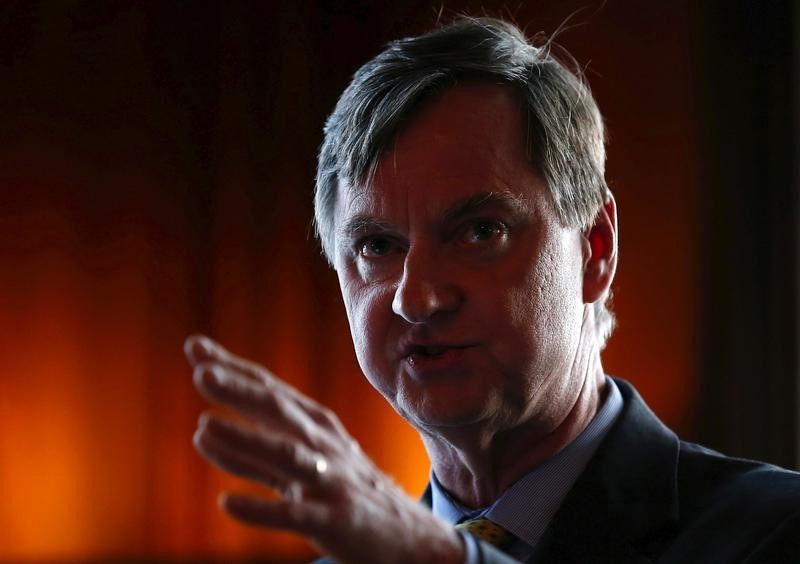By Ann Saphir
CHICAGO (Reuters) - The U.S. central bank has become so cautious about raising interest rates at even a moderate pace that the once-fringe preference of one of its most dovish policymakers for super-slow interest-rate increases has gone mainstream.
On Tuesday, Chicago Fed President Charles Evans said he expects two rate hikes this year, given his forecast for 2 percent to 2.5 percent economic growth and for unemployment to fall further to 4.75 percent by the end of the year.
U.S. Treasury yields rose, as traders took his comments to be bullish for the U.S. economy.
Evans, however, was hardly staking out new ground. This was the same call that he had made last December, when the Fed raised interest rates for the first time in nearly a decade.
But at the time Evans' call was an outlier, with most of his colleagues expecting four rate hikes this year. Now the majority of policymakers, including Evans, see just two rate rises, based on forecasts released last week when the Fed decided to wait for more economic data before raising rates.
The Fed’s "cautionary pause in the rate normalization path is about assessing risks and just being careful," Evans told the City Club of Chicago. “The continuation of a 'wait and see' monetary response is appropriate to ensure economic growth continues, labor markets strengthen further, wages begin to increase more, and all of this supports an eventual increase in currently low inflation right back up to our 2-percent objective.”
Evans declined to say when he expects the Fed to end its pause and raise rates.
But he made it clear that he is no longer struggling to convince colleagues with clearly more hawkish views.

"I used to sort of look at these dots and think that they were a bit too restrictive for what I thought was appropriate," Evans said, referring to a chart of Fed officials' individual rate-hike forecasts, each represented by a dot. "I now think that those dots is really a pretty good setting" for monetary policy."
Evans does not have a vote on policy this year, but does take part in the Fed's regular policy-setting meetings.
He said he expects inflation to rise to 1.75 percent and wants more evidence it is headed to 2 percent, adding that he does not mind if it overshoots the Fed's 2-percent goal. If inflation rises to 2.5 percent and appears to be sustainable, the Fed should make policy at least neutral and perhaps restrictive to tamp it down, he said.